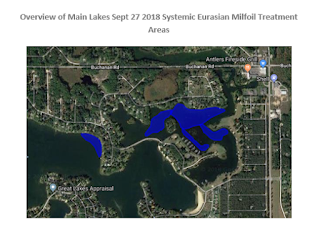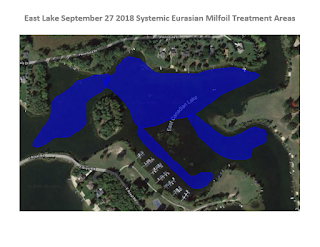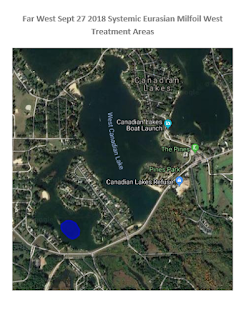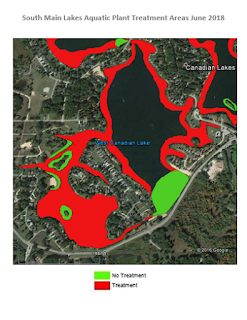With well over 200 hours logged on the new Truxor machine
working on Trapper Woods pond, Swan Lake, Camper Lake, and the Main Lakes, we
have deeper understanding of how to best utilize it as a lake management tool.
The potential applications for the Truxor are wide ranging from aquatic and
terrestrial vegetation control to floating peat mat removal to even potential
light dredging. However, what is limited is time and money. The endless list of
work sites is more than the Truxor can address in one season. Identifying and
prioritizing work sites is an ongoing effort. As we learn the machines
strengths and weaknesses, we can best use it to efficiently address control
needs. Some of these work sites will require annual maintenance while others
will only need to be addressed occasionally over years.
Currently we are using the Truxor on the Main Lakes to
remove Wild Celery in anticipation for the Labor Day weekend. Wild Celery is a
native aquatic plant that matures in the fall. It sends up a fibrous “curly-Q”
shoot to the surface that easily becomes tangled in boat props. Wild Celery can
be uprooted by ducks, geese, swans, muskrats and boats and can form fairly
extensive mats. Herbicides are at best minimally successful at controlling Wild
Celery. The Truxor will be utilized to capture and remove these mats as best
possible. Small mats of vegetation may wash up on your beach. If it is a small
amount, please help us out by raking it out, letting it dry, and disposing of
it. If it is a large mat, please let me know where it is and I will do my best
to get it collected.
Please keep your distance when observing the machine in
action. With an endless list of work to tackle, we need to keep the operators
engaged in the task at hand. I would be more than happy to answer any questions
you might have about the machine. We still plan to use aquatic herbicides when
they present the most cost effective strategy but the Truxor is providing an opportunity
to control nuisance vegetation issues were herbicides can’t. Below is a mat of Wild Celery on the Main Lake that was uprooted by boats, muskrats or waterfowl. Though herbicides will do nothing to control this nuisance, the Truxor can collect and remove much of this obstruction.











































